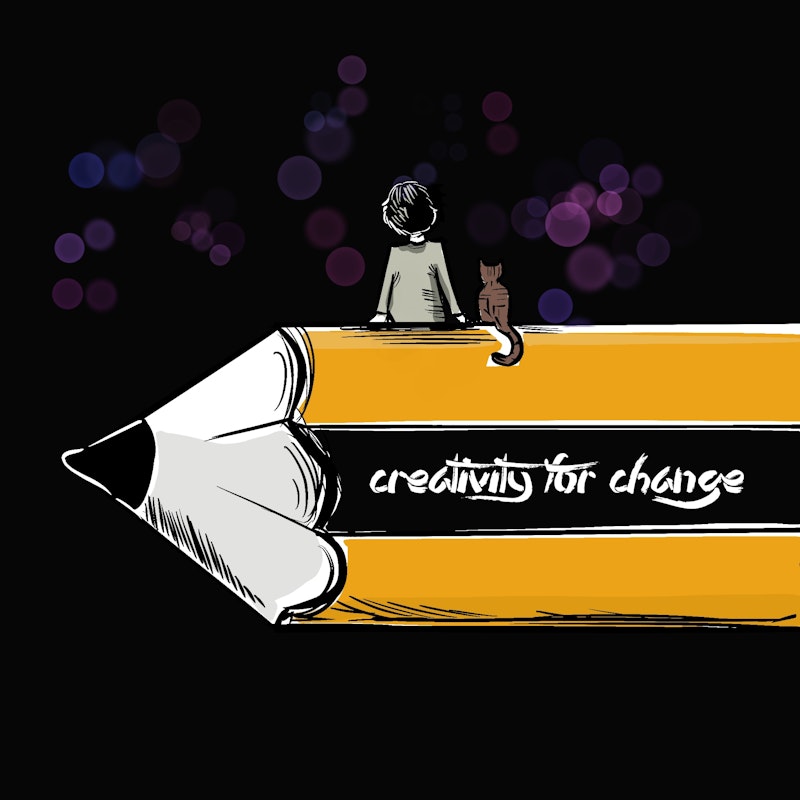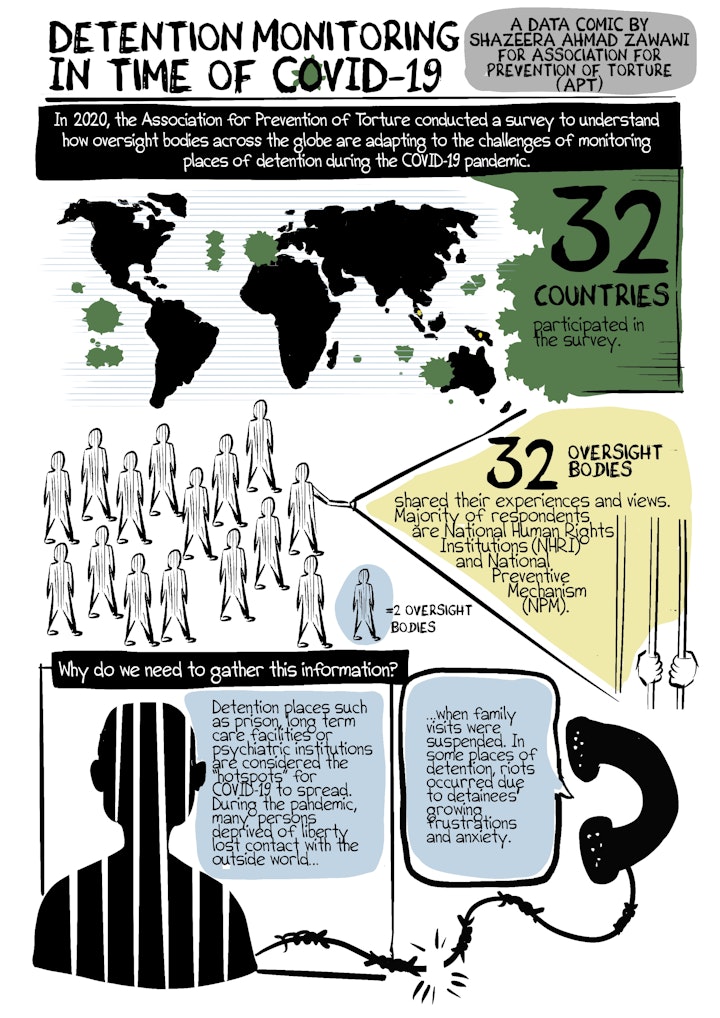
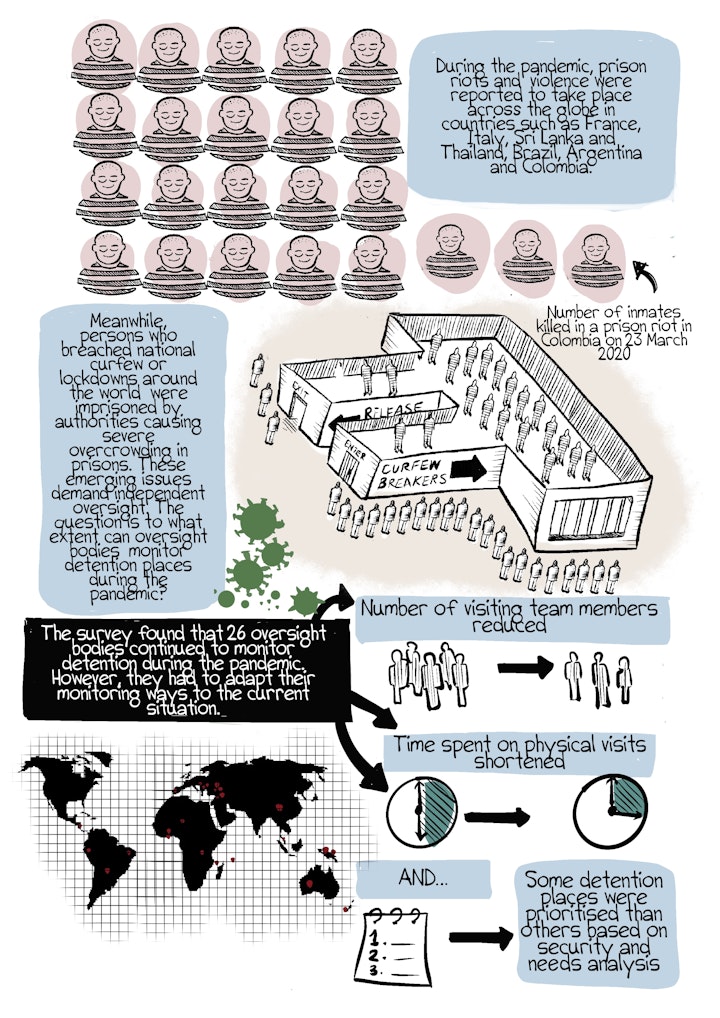
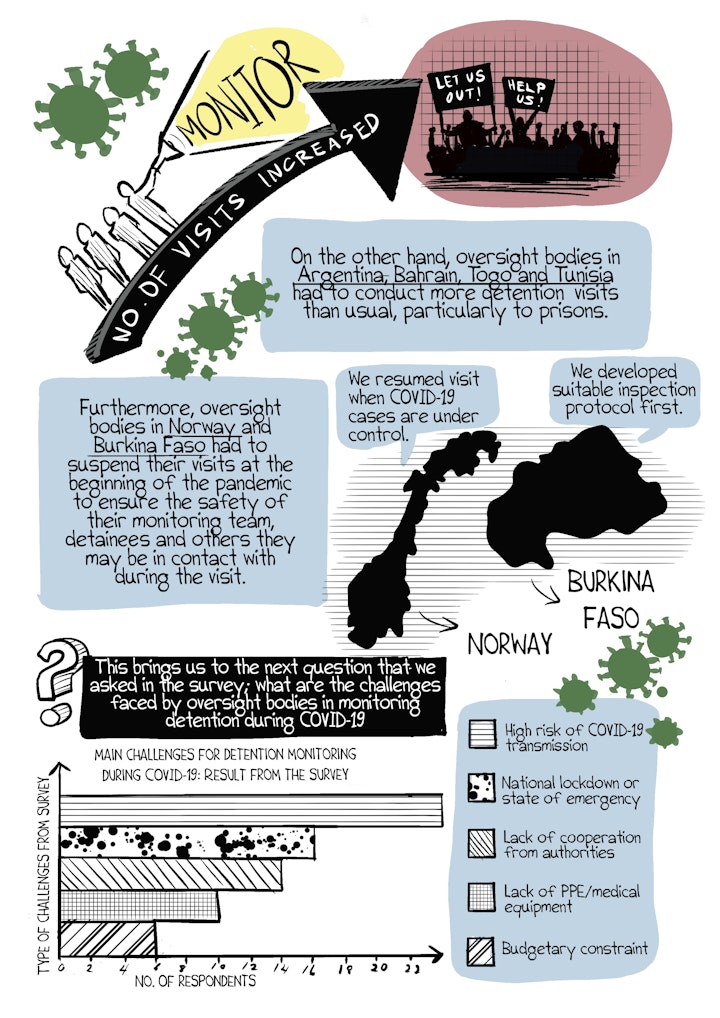
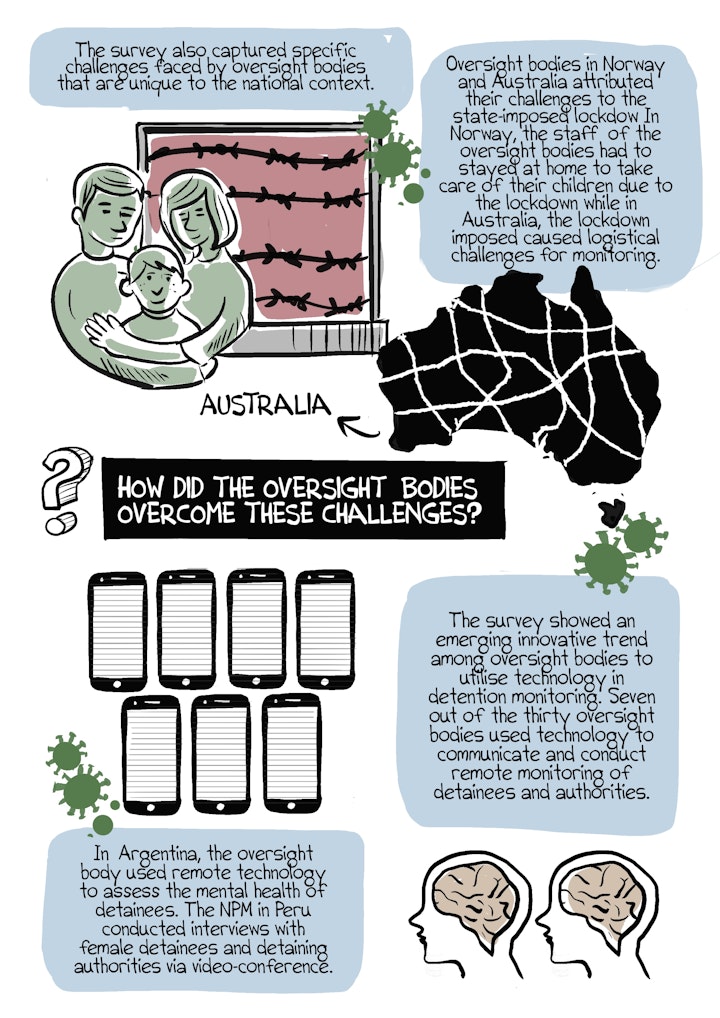
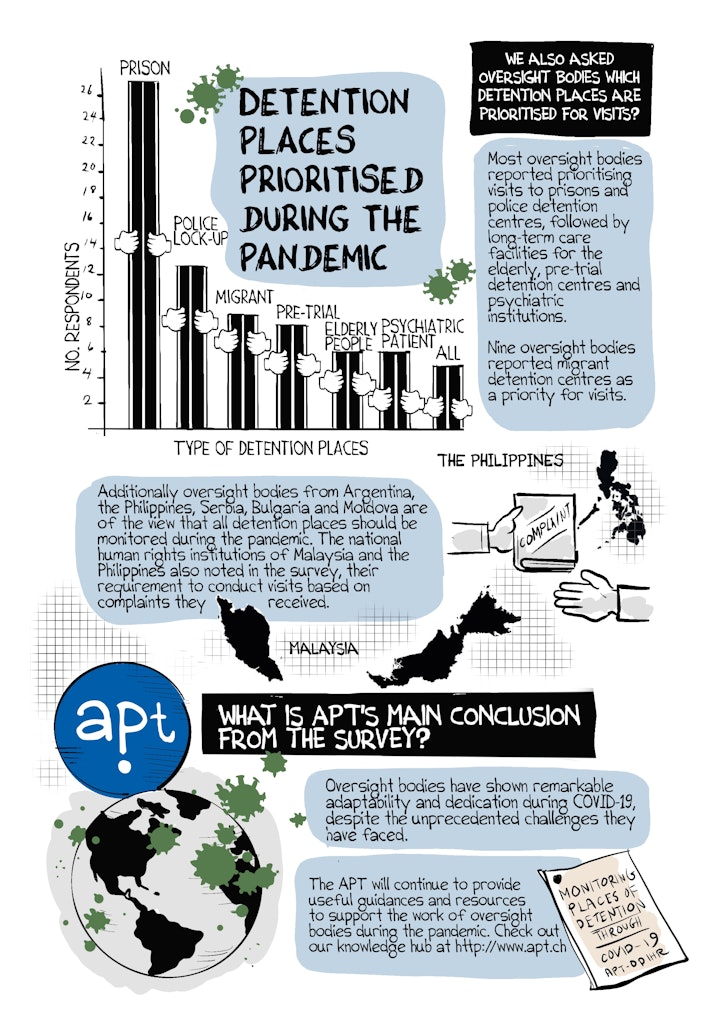
Last year, my organisation conducted a short survey among oversight bodies around the world on how they are adapting their work and coping with the challenges posed by COVID-19. 32 oversight bodies consisting of national human rights institutions and national preventive mechanisms ( oversight bodies that state parties to the U.N Optional Protocol to Convention against Torture are obligated to establish) responded to the survey. I drew this datacomic to visualise the main insights identified from the survey.
